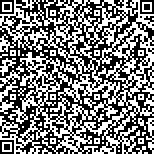孙武东,蔡倩,徐亮,等.经颅直流电刺激联合双侧训练对脑卒中患者上肢功能恢复的影响[J].中华物理医学与康复杂志,2020,42(3):205-208
扫码阅读全文

|
| 经颅直流电刺激联合双侧训练对脑卒中患者上肢功能恢复的影响 |
|
| |
| DOI:DOI:10.3760/cma.j.issn.0254-1424.2020.03.004 |
| 中文关键词: 经颅直流电刺激 双侧训练 脑卒中 上肢 |
| 英文关键词: Transcranial direct current stimulation Bilateral isokinematic training Stroke Upper limbs |
| 基金项目:济宁医学院实践教学教育科学研究课题(JYSL2017A04) |
|
| 摘要点击次数: 6810 |
| 全文下载次数: 6822 |
| 中文摘要: |
| 目的 观察经颅直流电刺激(tDCS)联合双侧训练(BIT)对脑卒中患者上肢运动功能的影响。 方法 选取脑卒中后偏瘫患者60例,采用随机数字表法将其分为tDCS组、BIT组及联合组,每组患者20例。3组患者均进行常规药物治疗和康复治疗,tDCS组患者增加tDCS治疗,BIT组患者增加BIT治疗,联合组患者增加tDCS联合BIT治疗。于治疗前、治疗4周后(治疗后)分别检测各组患者拇短展肌运动诱发电位皮质潜伏期(CL)、中枢运动传导时间(CMCT)及上肢Fugl-Meyer评分(FMA-UE)、偏瘫上肢功能测试-香港版(FTHUE-HK)。 结果 治疗后,3组患者CL和CMCT均较组内治疗前缩短(P<0.05),且联合组患者CL和CMCT分别为(23.58±1.18)ms和(12.00±0.78)ms, 较tDCS组、BIT组均明显缩短(P<0.05);3组患者FMA-UE评分和FTHUE-HK分级均较组内治疗前显著改善(P<0.05),且联合组患者FMA-UE评分及FTHUE-HK分级分别为(41.45±5.74)分和(3.40±0.50)级,均显著优于tDCS组、BIT组(P<0.05)。 结论 tDCS联合BIT可显著改善脑卒中患者大脑运动皮质兴奋性和上肢运动功能。 |
| 英文摘要: |
| Objective To explore the effect of combining transcranial direct current stimulation (tDCS) with bilateral isokinematic training (BIT) to improve upper limb motor function after stroke. Methods Sixty stroke survivors were randomly divided into a tDCS group, a BIT group and a tDCS + BIT group, each of 20. In addition to conventional medical treatment and rehabilitation training, the three groups were given the additional treatment their group names indicate for four weeks. Before and after the intervention, everyone′s motor evoked potential cortical latency (CL) and central motor conduction time (CMCT) were measured. Upper limb motor function was assessed using the Fugl-Meyer upper extremity assessment (FMA-UE) and the Hongkong edition of a functional test for the hemiplegic upper extremity (FTHUE-HK). Results After 4 weeks of treatment the average CL and CMCT had decreased significantly in all three groups, with those of the combined group significantly shorter than the other two groups′ averages. The average FMA-UE and FTHUE-HK scores had increased significantly in all three groups compared to those before treatment, but those of the combined group were significantly superior to the other groups′ averages. Conclusions tDCS combined with BIT can further improve the excitability of the cerebral cortex and promote the recovery of upper limb motor function. |
|
查看全文
查看/发表评论 下载PDF阅读器 |
| 关闭 |